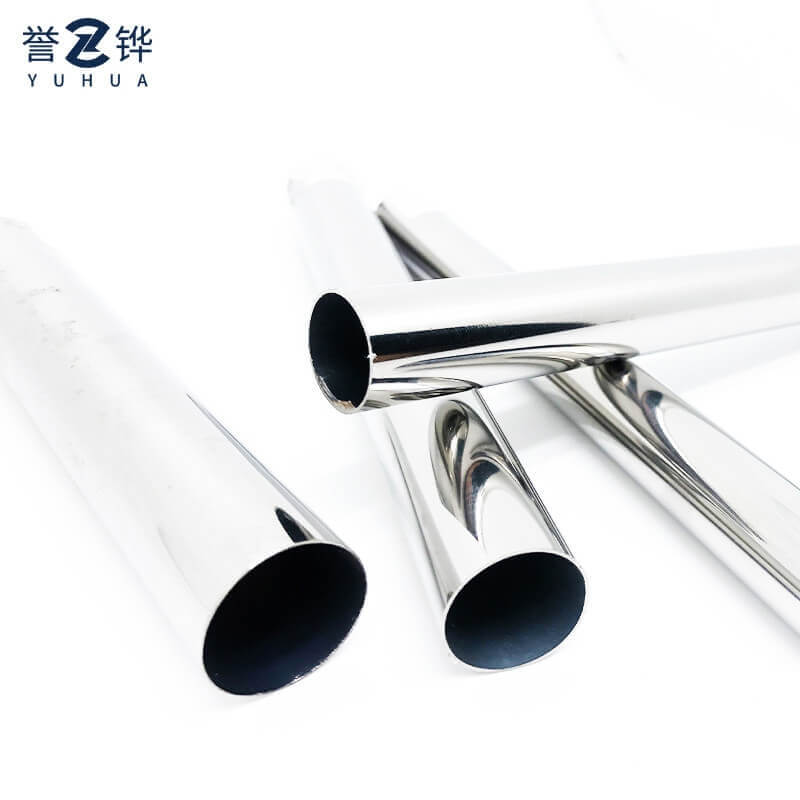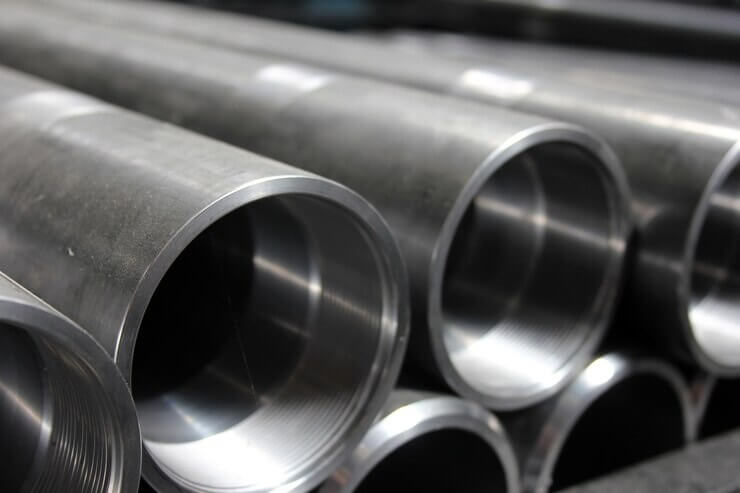316L Stainless Steel Round Pipes are a go-to for industries needing pipes that stand up to rust, last forever and work great in tough spots. The molybdenum in 316L stainless steel boosts its ability to fight off chlorides, acids and salty conditions. Enhanced resistance to chlorides, acids and alkaline solutions makes it perfect for marine and chemical environments.
Thanks to its low carbon content, 316L stainless steel round pipes are super easy to weld and shape, keeping performance strong even in extreme situations. Less carbon means less carbide buildup during welding, which helps keep rust resistance solid at the joints.
Stainless steel has good corrosion and wear resistance and long service life. Its smooth surface is easy to clean, making it ideal for sanitary applications. The stainless steel surface is smooth and clean, not easy to absorb dust and dirt and easy to clean and maintain.
With its killer resistance to chemicals, 316L stainless steel is a favorite in chemical processing plants. These round pipes are highly resistant to pitting, crevice corrosion and chemical exposure, making them ideal for applications in marine, chemical and pharmaceutical industries.
The clean, hygienic vibe of stainless steel makes 316L awesome for food-grade uses. It is suitable for the processing, storage and transportation of food. Its non-reactive surface ensures no contamination of substances during production or transport.

Nickel is a key ingredient in 316L stainless steel. Any ups and downs in nickel prices can really shake up the SS 316 pipe price. Similarly, molybdenum content adds to corrosion resistance but also contributes heavily to cost volatility depending on global mining outputs.
Mining hiccups or geopolitical drama can cause shortages, pushing prices up. Shipping delays or higher freight costs also add to the price climb.
More demand from construction projects or oil and gas setups can spike prices due to limited supply. The pharma industry’s growth also bumps up demand for clean, hygienic stainless steel like SS 316L.
Busy construction seasons can cause short-term demand spikes, shaking up pricing for a bit.
Tariffs in importing countries can jack up final costs. Export limits from producing countries can cut global supply. Trade policies directly affect pricing structures depending on regional agreements or sanctions.
Shaky exchange rates mess with international trade prices. When local currencies weaken against big ones like USD or Euro, imported materials cost more, hiking up final product prices.
Seamless pipes take fancier manufacturing, so they cost more per length than welded pipes, which are easier to pump out in bulk.
Polishing makes pipes look slick but adds labor time. A polished finish requires additional surface treatment steps that increase production costs compared with unpolished or mill finishes.
Asking for coatings like PTFE lining or custom alloy mixes for specific jobs means higher prices due to tricky material sourcing.
Custom sizes outside normal ranges need special tooling, which bumps up labor and material waste, raising the final cost.

At YUHUA, we’ve been cranking out stainless steel since 2009 in Foshan City. Our dedicated factory line is packed with high-tech gear to churn out both standard and custom stainless steel products fast.
We mix streamlined production with smart sourcing. By maintaining our own factory lines under strict quality control systems, we stay on top of product quality and market changes. This lets us give customers high-quality products at fair prices. Our direct distribution channels eliminate middlemen costs allowing us to remain price-competitive globally.
Our lineup includes seamless tubes for high-pressure jobs and ERW welded pipes for structural uses. Variety: 316 stainless steel pipe, 316 stainless steel bright pipe, 316 stainless steel decorative pipe, 316 stainless steel capillary pipe. These come in all sizes, from small precision tubes to big industrial piping, serving marine engineering, pharma gear and petrochemical setups.
We’ve got ISO 9001 and Sedex certifications, showing we’re serious about quality. Our products undergo rigorous testing protocols including hydrostatic pressure testing and eddy current testing.
We’ve got a ton of options—different wall thicknesses, diameters (from tiny capillary tubes to big industrial pipes), finishes (shiny polished or matte) and shapes (round, square, or rectangular). We offer solid stainless steel goods, good technical support and trusty after-sales help.
Yup. Freight costs tied to shipping distance hit final pricing hard, especially for big orders across oceans where sea freight rates swing with the seasons.
Low stock during high-demand times can force pricier, faster shipping methods. Warehousing capabilities help stabilize price fluctuations by ensuring consistent availability during market volatility.
Domestic markets get a break on transport costs, while international ones deal with import duties. Local production capacity also affects how much we lean on imports, which shifts pricing.
Regional taxes like VAT or excise duties add costs depending on local laws. Distribution networks with more middlemen tend to inflate end-user prices compared with direct-from-manufacturer models like ours at YUHUA.

Q: What’s the current market price range for 316L stainless steel pipe per kg?
A: Prices vary based on global nickel/moly trends but generally range between $4 – $7 per kg depending on size & finish specifications.
Q: Is seamless 316L stainless steel pipe pricier than welded pipe?
A: Yup. Seamless pipes need trickier production, making them costlier than welded ones, which are simpler to mass-produce.
Q: How can I get a quote for YUHUA’s 316L stainless steel pipe?
A: You can contact us directly through our website’s product center where our sales team will assist you with custom quotes based on your requirements.